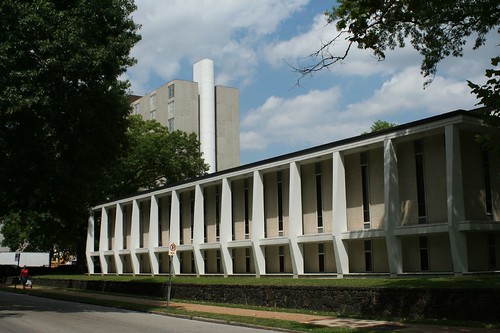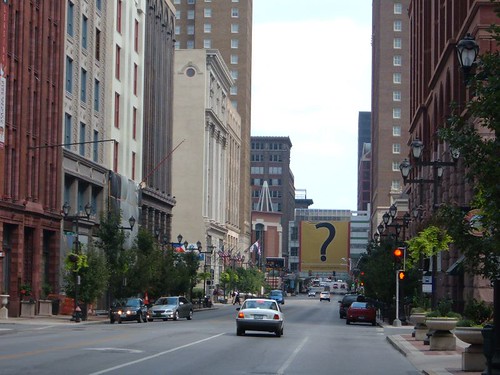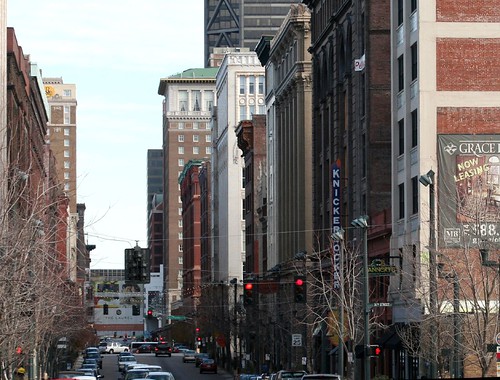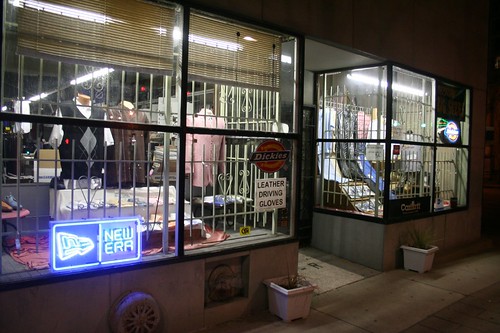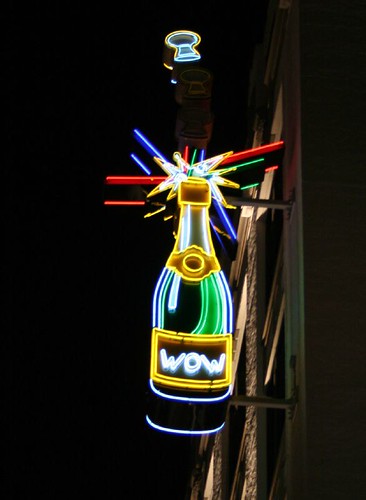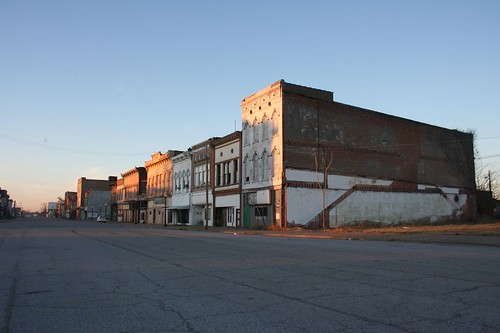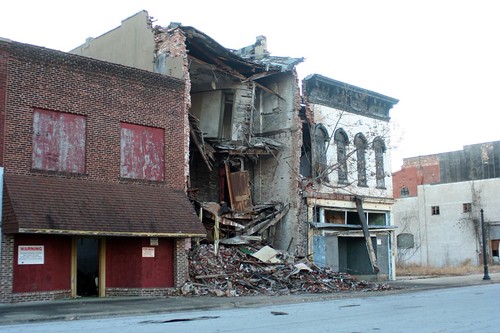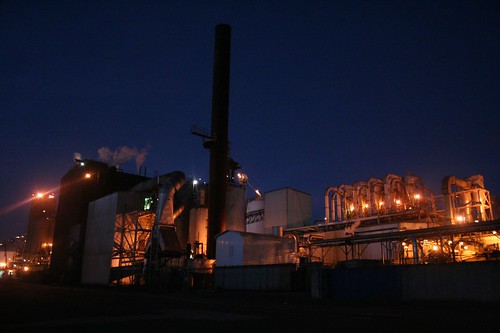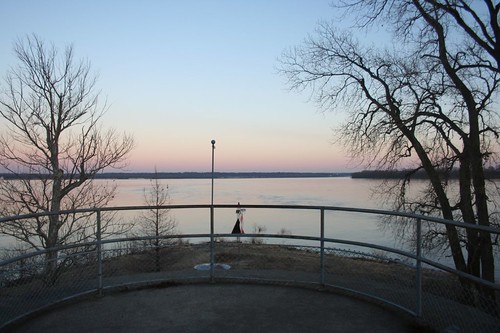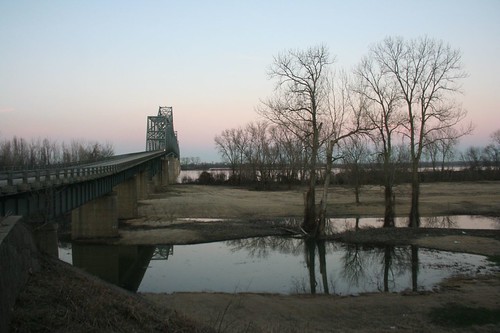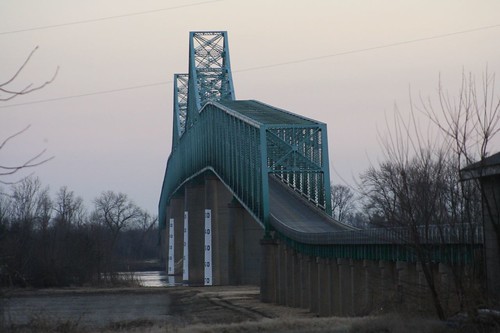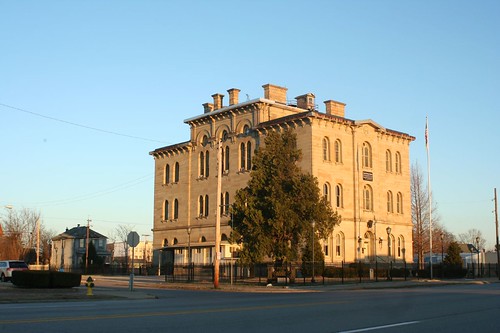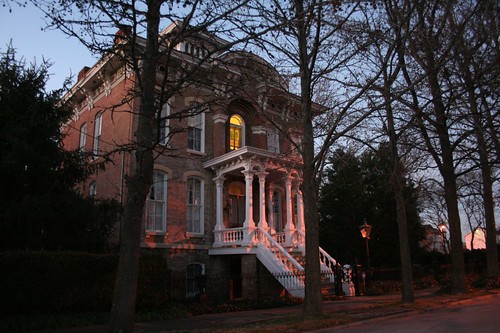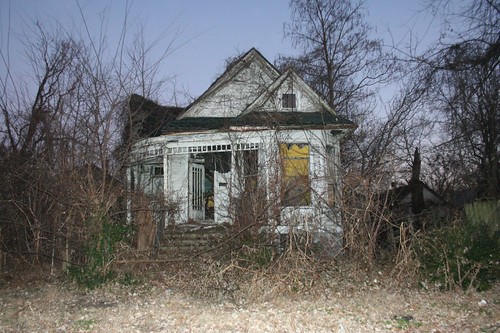Michael Allen has posted photos of
McEagle's May 21st presentation slides at Flickr. At last, the initial schemes are visible to the public.
In general, the slides are fairly unrevealing. Several show the near north side as it currently stands (minus the last year or so's worth of demolitions.) There are a few abstract diagrams showing things like the project area, proposed land uses and schematic building layouts.
Particularly frightening is
an acquisitions map showing property that McKee has (or apparently thinks he can get via the city) in blue. It's an ocean of blue, dotted with some little white islands. What's it like to be living on one of those islands right now, watching the waters rise as they have for the last five years?
There's not a whole lot to react to in the plan; all that can be seen are vague generalities. There is one big question to be asked, though: Why does it need to be so big?
What about this plan requires such a vast acquisition? What kind of synergies are planned here that require this scale?
The question is very important, because this land is in the city - an urban environment with all the complexities that entails. Anybody who's studied their Jane Jacobs -- or taken a stroll down a functioning urban street like Delmar Avenue or Cherokee Street -- knows that the best city environments are highly complex and largely organic. They grow and thrive much like a living creature. Small cells appear -- businesses, houses, apartment buildings. They divide, they grow, they endure, and each adds its complexity to the whole, creating something greater than the mere sum of its parts. These small parts are crafted at the scale of human beings, and they create lovely, pleasant, desirable places to live. Just as a complex ecology resists being wiped out by a catastrophe, so too is a complex city resistant to the vagaries of economy, fashion, and time.
So why does this project need to be so huge? Why does it need to happen all at once? We need to ask such questions, because such a vast scale implies a monoculture, and it implies a broad brush, and it implies a non-human scale, and it implies sledgehammer solutions to problems that require a scalpel.
In fact, it sounds a lot like old-style mid-century urban renewal -- the kind that wiped out big swaths of Soulard, that nearly claimed Lafayette Square, that obliterated the Mill Creek Valley, that gave us phenomenal successes like Darst-Webbe and Pruitt-Igoe. The kind we're still cleaning up from over fifty years later.
To insist that redevelopment can only be done on a vast scale shows a profound lack of understanding of the nature of cities.
Here's my hypothetical suggestion instead: start with Old North St. Louis, a neighborhood that's long been pulling itself up by the bootstraps. Take the 30 or so Blairmont-owned buildings in the neighborhood, and rehab them all. Sell some, rent some, do a mix of market-rate and income-restricted, whatever -- just get them occupied and looking healthy again. Thirty properties, figure maybe $50,000 apiece on average to get them up to snuff -- $1.5 million in initial investment. If I'm way off on my estimate, maybe it's $3 million -- somewhere in that ballpark.
That's chump change to a fellow with McKee's pockets, but it would be a HUGE shot in the arm for a neighborhood the size of Old North. Thirty vacant properties, gone in a flash! If Paul McKee Jr. had done this three years ago, the locals would've carried him down the streets on their shoulders. And aside from the trust and good will that would've been built up, the neighborhood would be visibly stronger, that much more desirable, more attractive to other developers --
-- so much more, in fact, that you could then maybe start spreading the success across West Florissant, into St. Louis Place. Rehab another thirty houses between Florissant (a major barrier) and St. Louis Place Park (a desirable amenity lined with occupied houses). Suddenly eastern St. Louis Place is on its way to becoming as strongly entrenched as Old North.
Phase 3? Well, now that you've reinforced your assets, then you can start to think a little bigger. There's a lot of vacant land in Old North - how 'bout some infill? How 'bout pushing west of the park? A big project out on the 22nd Street prairie would get a lot of support by this point.
...and so on. If this type of plan had been started in 2003, we'd be through several grand ribbon cuttings by now.
This is how cities -- not suburbs, not strip malls, not shopping malls, not
lifestyle centers, but
cities -- have grown for hundreds of years, and it is a pattern and a truth that we ignore at our own peril. Attempts to inflict massive change inevitably result in massive trauma.
This doesn't take money ranging into the billions of dollars. This doesn't take five years of land acquisition. This doesn't take endlessly gargantuan juggling acts. This doesn't require monolithic land assets or totalitarian site control or eminent domain.
It does, however, require understanding that a true and proper city is vastly complex, finely grained and multifaceted. Furthermore, it takes patience and care. Paul McKee Jr. has demonstrated that he is endlessly patient. Whether he cares remains to be seen, but to date the track record does not look good.


